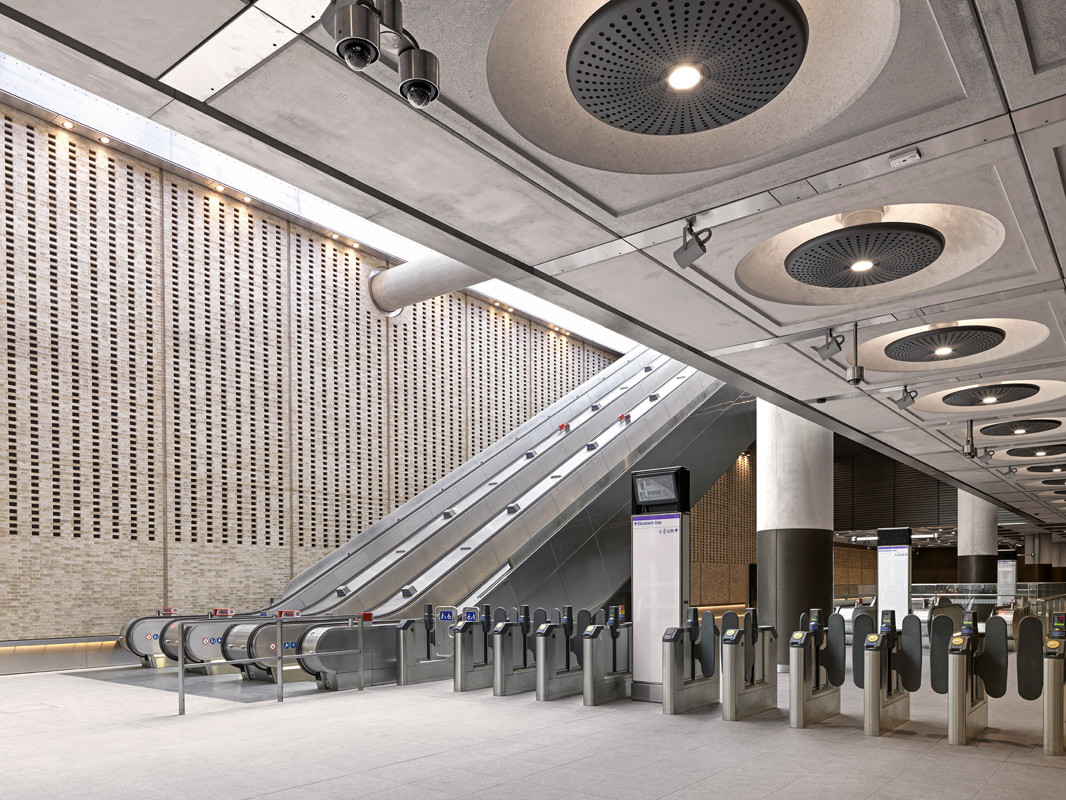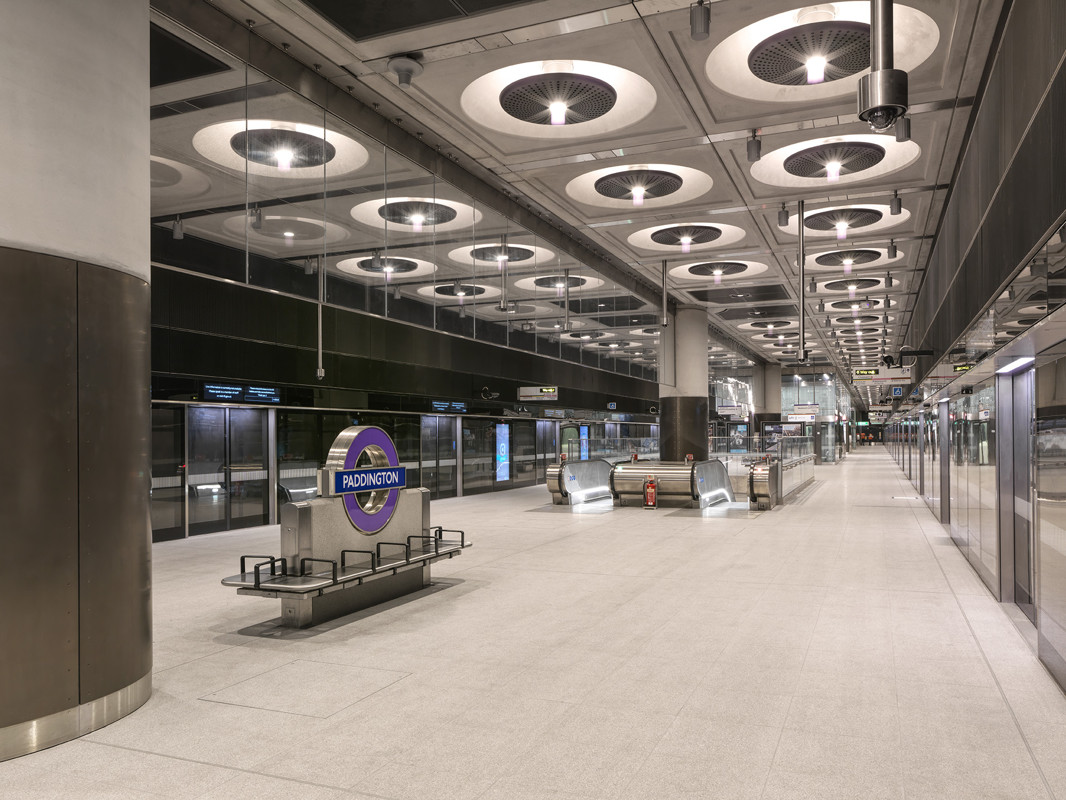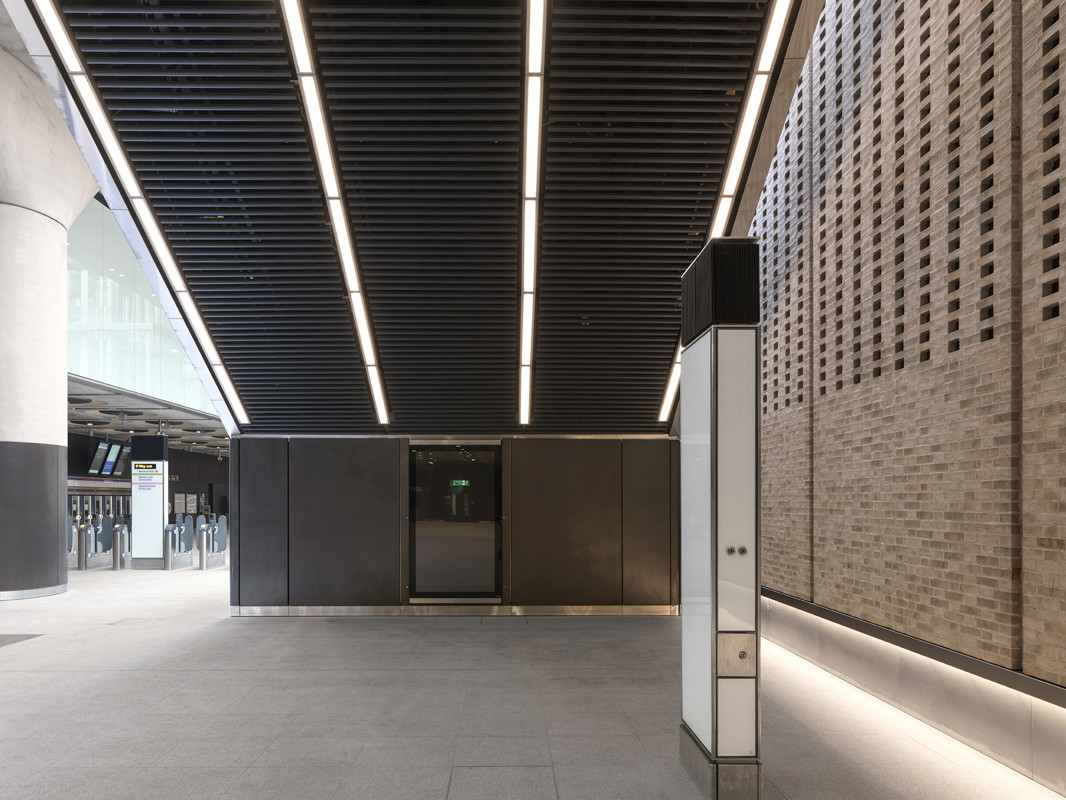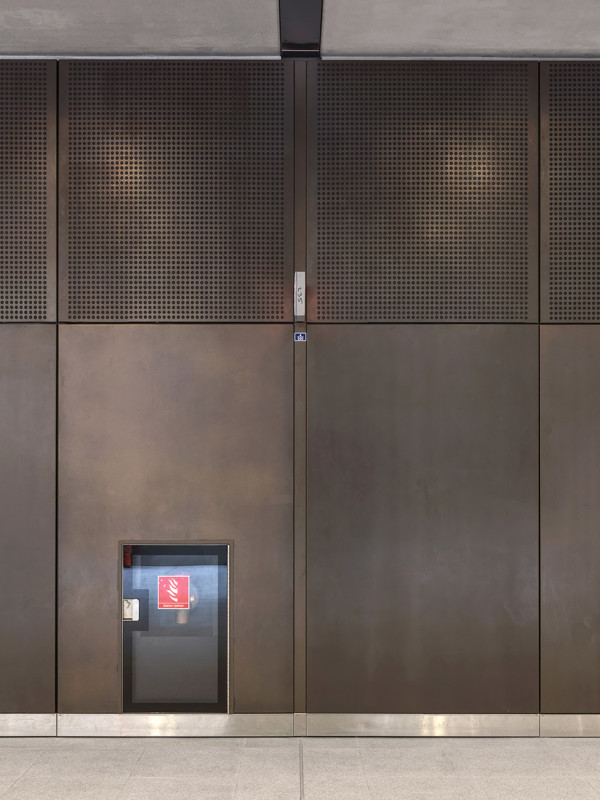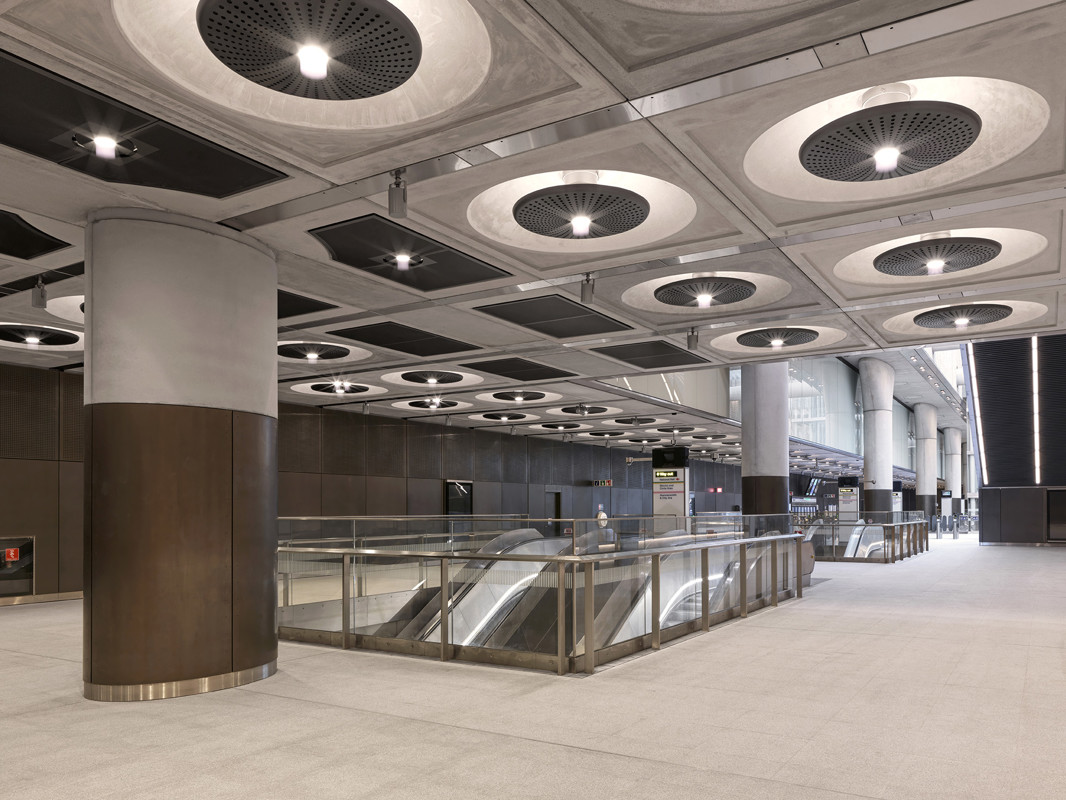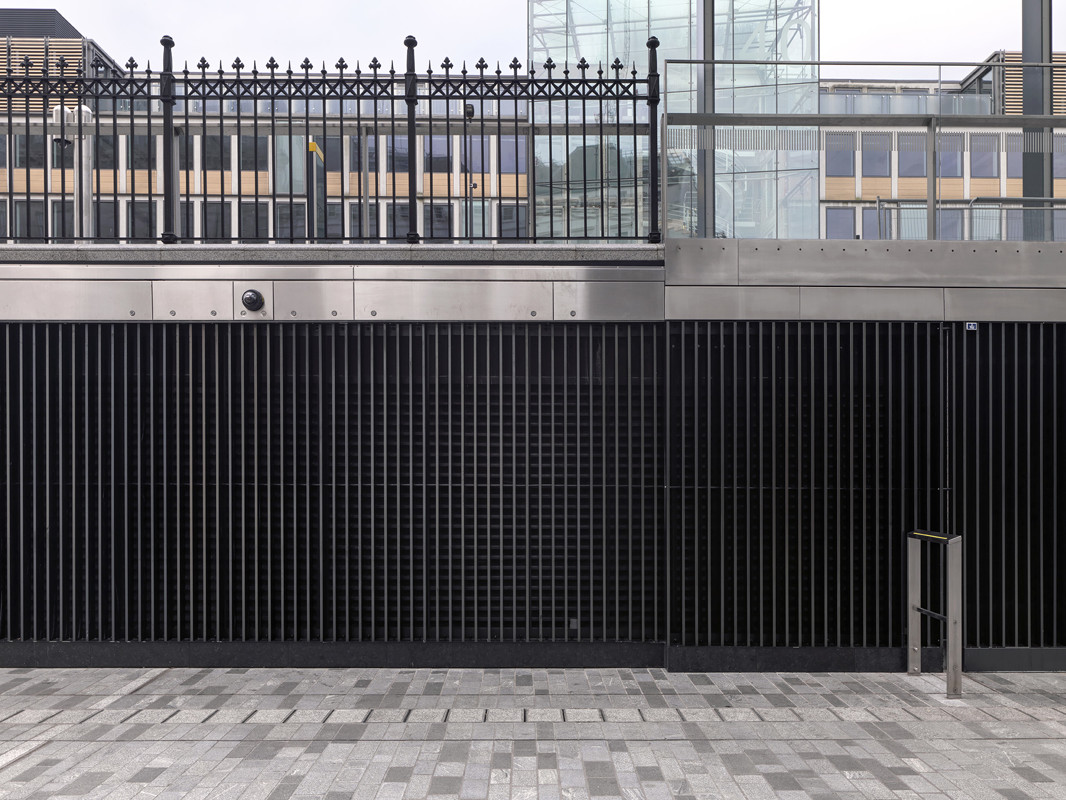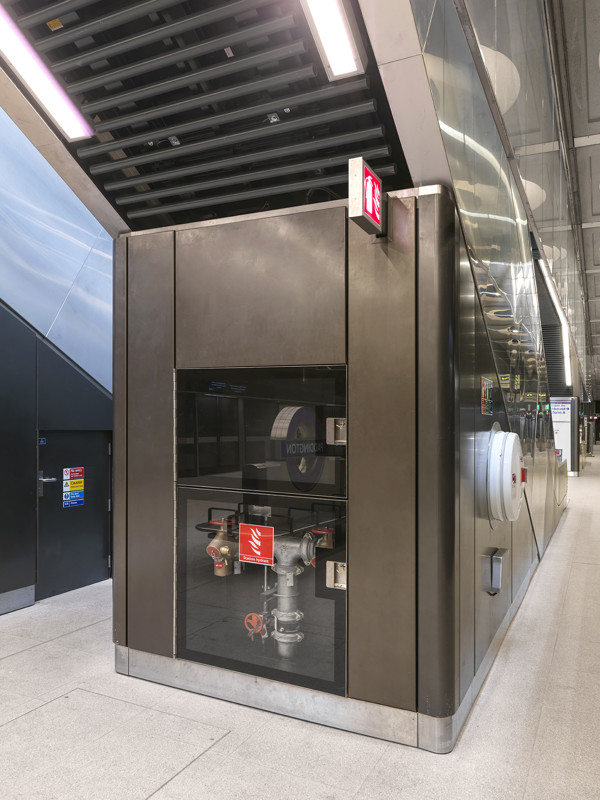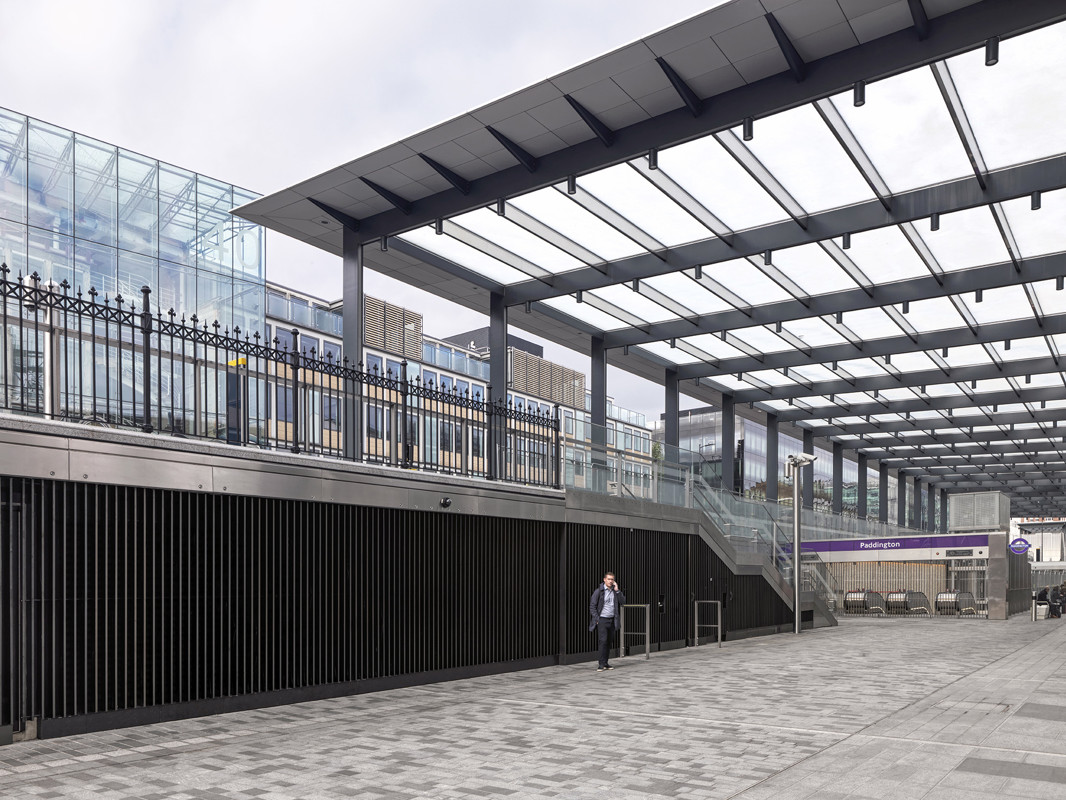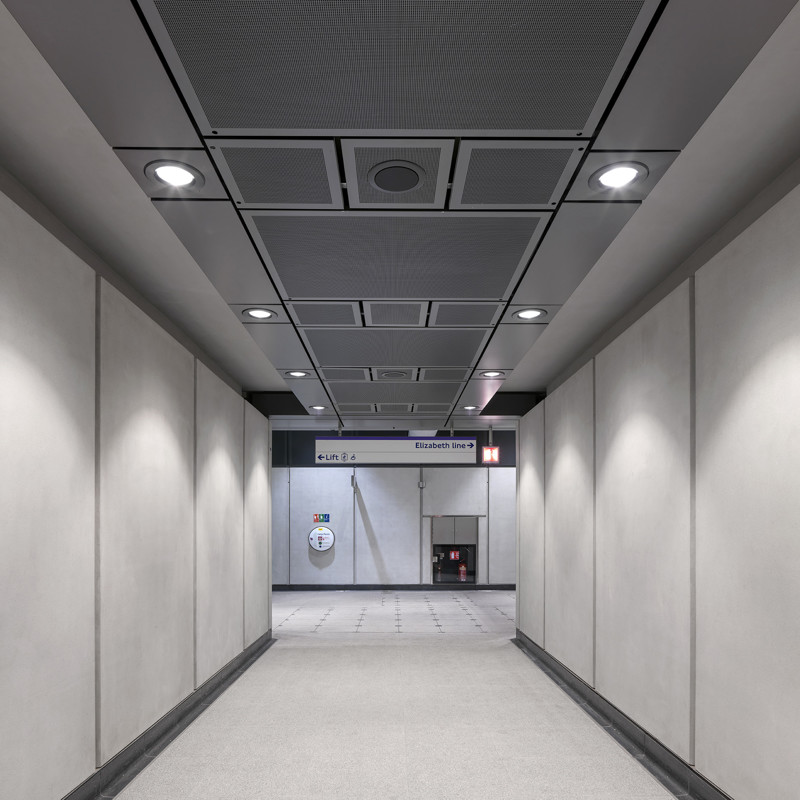Paddington Station
Standing proudly for over 100 years, Brunel’s Paddington Station is complimented by a significant addition to London’s underground network. The original station built in 1854 is now linked to the new Elizabeth Line station.
Exiting from Paddington’s platforms, one walks through the patinated bronze archway to the new station head. The archway is dressed in SAS’ patinated bronze wall lining and SAS740 anodised linear ceiling system. Opposite the Elizabeth Line entrance, charcoal stainless-steel louvres line the urban realm leading to the entrance. Manufactured by SAS, dark metal fins are mounted against mesh panels that were chosen for aesthetics, air flow and access. The louvres compliment the original Victorian railings situated above, a nod to the traditional heritage of the original Paddington Station.
Floating above the entrance is an elegant 120-metre-long glass canopy. The artwork was designed using original pastel drawings of 32 unique cloud types. Created by American artist, Spencer Finch, this cloudscape has the dual purpose of being a fascinating piece of art whilst also reducing solar glare into the station.
Travelling down the escalators lined in polished stainless steel, the commuter finds themselves on a spacious concourse. Patinated architectural bronze cladding lines the ticket hall, and the theme continues with the bronze-clad rows of columns. The materiality and finish chosen specifically by architect Weston Williamson + Partners reflects the traditional language and history of the original Paddington Station. It was important for SAS’ products to meet the architectural vision drawn out by WW+P. The station’s colour palette are all neutral tones, including deep brown and muted grey, which express a traditional and softer aesthetic.
The bronze wall cladding provides more than an architectural fabric. At high-level, the bespoke 20mm perforated cladding provides Class A acoustic absorption that is a standard requirement for PAVA (public address and voice alarm system) in rail. The acoustic treatment also affords a calm and ambient environment for commuters, adding to the wellbeing of their journey. At low level, the non-perforated cladding is designed to be robust enough to withstand the thousands of commuters that will be using the new service. SAS’s metal wall lining system was selected because of its anti-impact properties, accessibility and long design life.
On platform level, the design language continues with bronze column casing and anodic PPC SAS750 anodised bronze tubeline, dressing the underside of all escalators. Commuters have a choice of continuing their journey on the Elizabeth Line or dropping down a level to the Bakerloo Line link.
SAS International worked closely with Weston Williamson + Partners and Costain Skanska JV (CSJV) to design and deliver high-quality architectural metalwork finishes that contributed to a visually striking modern station. In tandem, SAS were stringent in complying with Crossrail and TfL standards. SAS endeavoured to combine the architectural intent with product design life and the demands of a state-of-the-art transport interchange.
Discover more projects on the Elizabeth Line: Whitechapel Station | Liverpool Street Station | Tottenham Court Road Station
Sector:
Transport
Client:
Paddington Station
Architect:
Weston Williamson + Partners
Main contractor:
Costain Skanska JV
System type:
WP20 Cladding, SAS750 Tubeline, Louvres, Column Casings, SL10 Vent Shaft Acoustic Cladding, Rafts (only on Bakerloo level) & Skirtings
Region:
United Kingdom
